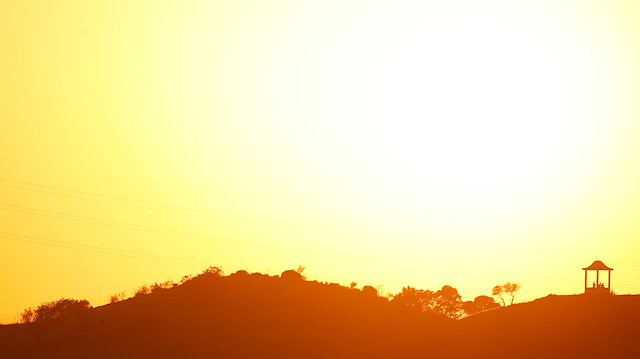
Being exposed to midday sunlight in most of the US and world cities during summer for 11-34 minutes will inactivate 90% or more of the novel coronavirus, according to a recent study.
The study, published by Jose-Luis Sagripanti and C. David Lytle in the Journal of Photochemistry and Photobiology early June, calculated the expected inactivation by artificial and solar ultraviolet radiation in cities around the world at different times of the year.
The data indicated that the virus should be inactivated "relatively fast" during summer in many populous cities of the world, showing that sunlight should have a role in the emergence, spread rate, and duration of coronavirus.
But the study said "the virus will persist infectious for a day or more in winter, with risk of re-aerosolization and transmission in most of these cities," from December until March.
The researchers found that only Miami and Houston in the US will receive enough solar radiation to inactivate 99% of the virus in spring. But during winter, most cities will not receive enough solar radiation to produce 90% viral inactivation during a two-hour midday exposure.
Stay-at-home orders imposed by many countries to stem the spread of the virus may actually have raised the contagion of the pandemic, they added.
"If we accept a possible virucidal role of sunlight during coronavirus pandemics, then forcing people to remain indoors may have increased (or assured) contagion of COVID-19 among same house-hold dwellers and among patients and personnel inside the same hospital or geriatric facilities," noted the researchers.
"In contrast, healthy people outdoors receiving sunlight could have been exposed to lower viral dose with more chances for mounting an efficient immune response."
The study used a model developed for estimating solar inactivation of viruses of biodefense concerns to calculate the expected inactivation of the virus.
The methodology has been validated with Ebola and Lassa viruses, said Sagripanti and Lytle.
According to the study, during summer, the required time for 90% infectivity reduction in some cities across the US and globally are as follows: Miami 14 minutes, Los Angeles 18, Washington, D.C. 21, New York 22, Sao Paulo 13, Barcelona 22, Paris 28, London 30, Istanbul 22, Tehran 19, and Shangai 16 minutes.














